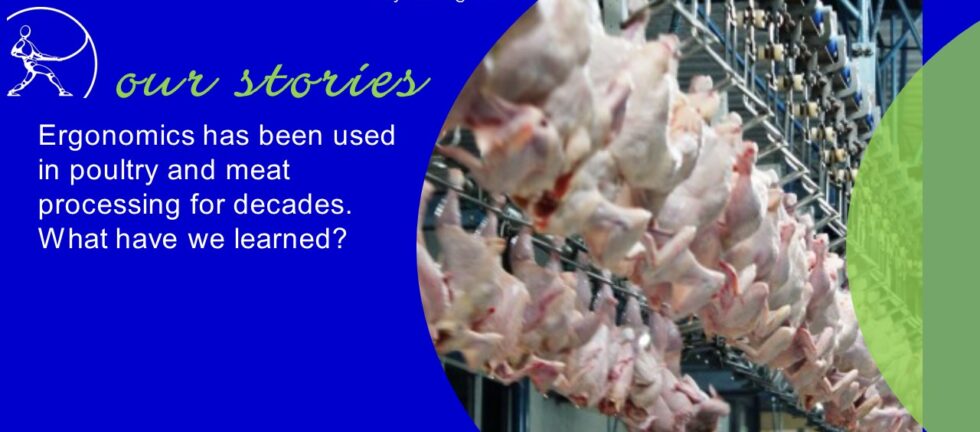How is this sector unique?
It’s no surprise that, in the poultry processing industry, where over 100 chickens per minute are processed, the work tends to be repetitive, awkward, and sometimes forceful. The work environment is cold, workers wear multiple layers of gloves, and floors can be slippery. From an ergonomics perspective, the injury risk can be very high, relative to other types of work.
In most departments, the work is fast-paced and repetitive. Thankfully, most of our poultry clients use job rotation to provide some variety throughout the day. Workers regularly rotate between several jobs within a line. We can do quite a bit to mitigate the risk of sprain/strain injuries, by providing variety, and limiting exposure to repetitive, awkward work.
Because the work is continuous and repetitive, an ergonomist can observe multiple workers at one job. We can see how one job affects a tall and small worker differently, and promote solutions that accommodate everyone.
Working with any client in the food industry requires a sensitivity to the challenges associated with sanitation. Lifting devices that are amazing in other industries have to be specially-designed to meet food safety standards. This can add significant cost!
What are the biggest ergo challenges in this sector?
The plant floor is often noisy, requiring workers to wear hearing protection. Noise becomes a challenge when interacting with workers on the floor. Establishing rapport with supervisors and workers alike is important for effective data collection and solution implementation, but can be difficult with communication barriers. Carter says, “I have found it beneficial to build a relationship with the supervisor and make sure that I have an understanding of the job before starting data collection. I try to make sure that workers understand why I am there and why I am watching them work, by introducing myself to workers during a morning meeting, or asking the supervisor to convey that information to the workers. This helps the workers feel more comfortable with me, and ensures that the workers work in a typical fashion, without thinking it’s an audit of their performance.”
Overcoming language barriers is another hurdle in effectively engaging with workers. Carter says, “I always maintain respect with the worker, and ask the supervisor to help me ask questions, and understand the worker’s responses.”
Over the years we’ve helped to implement effective knife sharpening programs to reduce force, job rotation programs, adjustable platforms to optimize working height, better conveyors to reduce reaching, and manual handling aids for transferring totes and cases. We’ve come a long way, but there is still plenty of work to be done!
What advice would you give to someone who is responsible for MSD prevention in this sector?
Due to the repetitive nature of the jobs, an ergonomist can perform more assessments in a shorter timeframe, in comparison with more complex work cycles in other industries. The solutions are not always easy to identify, but a solution that improves one job can often be used on other lines.
Prioritizing jobs for assessment based on reported concerns and injuries can be done by working with the health and safety representatives. Supervisors and managers can also help to direct you to jobs where errors are made, or where production tends to bottleneck; ergonomics solutions can often help here too.
Other relevant points:
Because workers of varying heights and sizes work at the same workstation during job rotation, we need to observe the job while it is performed by different workers, to fully understand the varying postures. In such a repetitive environment, working a bit too high or too low can have a really big impact on a worker’s comfort, safety, and productivity. In other industries, a worker might tolerate reaching over shoulder height once every few minutes to install a bolt, but working at this height continuously presents a much greater risk!
Technology and automation have greatly advanced ergonomics in this sector. Some of the most demanding jobs from 15 years ago are no longer assigned to humans. Many of the manual handling tasks that used to be performed by workers are now automated. Ergonomics design principles are being integrated into machinery and equipment to minimize physical strain on workers and enhance overall safety and efficiency.
As in all industries, providing training and promoting awareness of ergonomic work practices is critical. Ongoing awareness campaigns help employees recognize the connections between MSD hazards and ergonomic work practices, at work and at home. We look forward to implementing and quantifying the success of our new micro-learning initiatives in this sector. Ask Carrie@TaylordErgo.com for more info.


